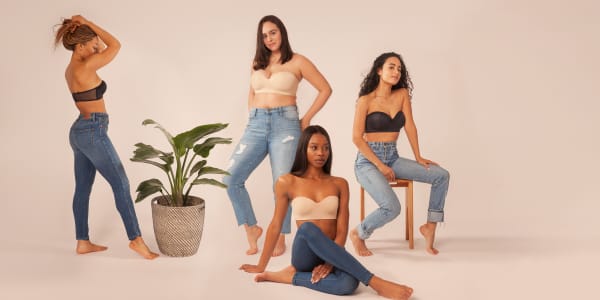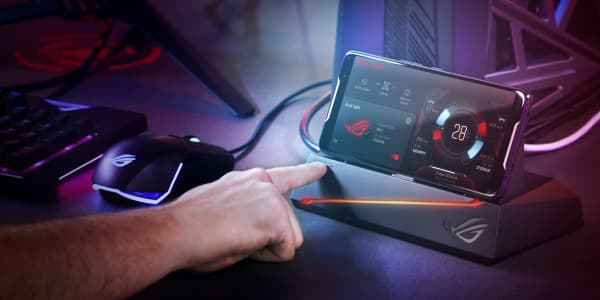Zappos has been selling footwear online for almost 20 years, and in that time, it has come to dominate that space. Recently, the Zappos Adaptive line — which sells apparel for people with disabilities — took a step toward making it possible for the deaf and hard-of-hearing to experience music.
Zappos, owned by Amazon, invited a group of 150 deaf and hard of hearing people to the Life Is Beautiful music and arts festival in Las Vegas on September 21, then outfitted them with a product that allowed them to enjoy the music of American rock band Greta Van Fleet. They took in every bass line, every drum beat, every guitar chord and every vocal, some for the first time in their lives.
The product is called Music: Not Impossible, or M:NI. It has been in development since 2014, and it is made by Not Impossible Labs, a company founded by film producer and philanthropist Mick Ebeling, which has been making what it calls "technology for the sake of humanity" for a decade.
Not Impossible Labs began in 2009 when Ebeling invited artists from all over the world to his home to design an eye-tracking system for those suffering from paralysis. The project was a success, and so now the company has turned its attention to the hard-of-hearing with M:NI.
"M:NI is a new canvas to deliver experiences to the body's largest organ — the skin," said Not Impossible Labs' director of technology Daniel Belquer. "We see it as much more than a technology. It's a new way to build and deliver human connection through artistic expression."
How the technology hears
Using what the company calls Vibrotextile technology, the wireless wearable allows users to feel music through a chest harness, ankle bands and wristbands. The sound of the music is converted into vibrations to create what the company calls a "surround body" experience for the wearer.
M:NI resulted from Ebeling partnering with neuroscientist Dr. David Putrino and Belquer, who as a professional artist has used vibrations as a central element of his artistic installations. The breakthrough moment came when this team chose to separate music's different channels — bass, treble, mid-range — and send those signals to a wearable device. After partnering with electronics company Avnet and using its technical expertise, the design and functionality of the harness was perfected.
"This is by far the most complex project that Not Impossible has ever embarked on," said Ebeling. However, complex projects are not new to him.
The company has not yet made public its market strategy or pricing for M:NI.
The Not Impossible origin story
Tony Quan is a famous graffiti artist known as Tempt. His body became paralyzed by ALS, or Lou Gehrig's disease, in 2003. When Not Impossible CEO Mick Ebeling heard about him, he wanted Quan to create again. This inspired Ebeling to create the EyeWriter eye-tracking system, whose success led to the founding of Not Impossible Labs.
The technology uses eye-tracking glasses that anyone can construct themselves by following the online instructions and using an aluminum wire, a $40 camera, a $5 pair of sunglasses and other widely available and inexpensive materials. The total investment for anyone wishing to build one can be as low as $100.
It runs on open-source software that can be updated by anyone. The end result allows those suffering from paralysis to draw and write by tracking the wearer's eye movements and turning them into lines on a computer screen.
The EyeWriter was recognized by Time magazine in its "50 Best Inventions of 2010" feature.
"It feels like taking a breath after being held underwater for five minutes," the graffiti artist Quan, who was able to create his first work of art in seven years, told Time.
At Not Impossible, we're always about creating accessible solutions for the masses.Mick Ebelingfilm producer and philanthropist
Daniel Omar is a South Sudanese boy who lost both of his arms at age 14 to a bomb that exploded in that war-torn country. As with Quan, Ebeling heard about him and felt compelled to harness technology to improve the life of someone who now lacked the simple ability to put food in his own mouth.
Ebeling traveled to Omar's home in the Nuba mountains. He met the boy and enlisted the help of the Intel and South African animator Richard Van As, whose loss of four fingers inspired him to invent the "Robohand" prosthetic.
According to 3-D printing company MakerBot, which is owned by Stratsys, the Robohand is "a set of mechanical fingers that open and close to grasp things based on the motion of the wrist. When the wrist folds and contracts, the cables attaching the fingers to the base structure cause the fingers to curl."
It can be made with a 3-D printer and, like the EyeWriter, can be built by anyone following the free online instructions.
With the help of Intel, Van As and local doctor Tom Catena, Ebeling established a Robohand-inspired 3-D printing facility for artificial limbs in Omar's village. The end result was not just a prosthetic arm that allowed the boy to get back to something like a normal life but a facility that allowed locals to independently manufacture artificial limbs for the amputees that the war was still creating.
Not Impossible's "prosthetic in a box" is still in the field-testing stage and not yet available outside of South Sudan.
What's next: Parkinson's
Not Impossible Labs next wants to roll out a product that will use the same Vibrotextile technology and intellectual property used for M:NI to help people suffering from Parkinson's disease.
"Not Impossible has been working alongside the Parkinson's community to create a non-pharmaceutical device that strives to improve those individuals' confidence in their daily and cherished activities," Ebeling said. The company isn't offering details about this product but expects to offer more information when its rollout is ready.
Not Impossible Labs is also the subject of a documentary that details the company's origins and was directed by Frank Stiefel, whose 2016 short film "Heaven Is a Traffic Jam on the 405" won the Academy Award for Best Documentary Short Subject. The documentary, "Tomorrow: Not Impossible," premiered October 11.
In the meantime, there is still the matter of getting M:NI out to the public. Ebeling said that the company intends to roll it out throughout 2019, and the eventual price point would be within the reach of the average consumer.
"At Not Impossible we're always about creating accessible solutions for the masses," he said. "With this project, we'll measure success by the equality we're able to create between the hearing and deaf audiences, through their shared vibratory music experience."





